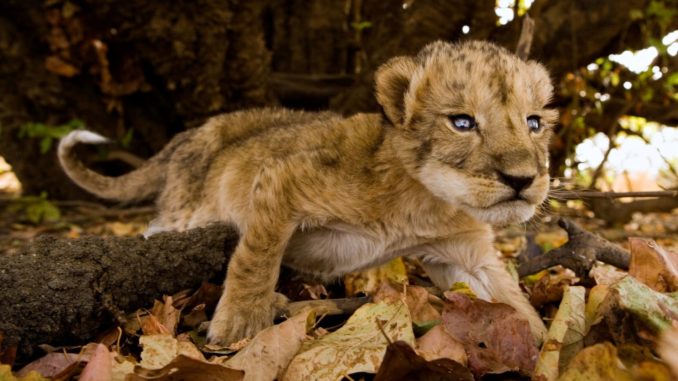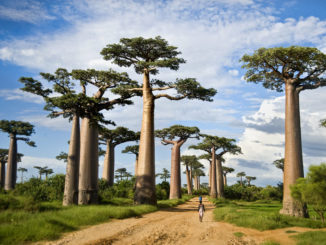
Adrian Blomfield, mbirikani, kenya
The Telegraph 23 June 2018
The poison is supposed to be so fast-working that the locals call it “Two Step” — because “you take two steps and drop dead” — but the lions died slowly.
Disorientated and vomiting, their vision blurring, the three lionesses and their eight cubs stumbled away from the poisoned carcass, breathing becoming ever harder until suffocation overtook them.
In just this single incident in April, more than a third of the famous tree-climbing lions in Uganda’s Queen Elizabeth National park were eliminated, leaving as few as 19 left in one of only two places in the world where lions display such arboreal behaviour.
The killing of lions in Africa is hardly new. Certain tribes, like the Maasai, have long hunted lions in coming-of-age rituals or to protect their livestock.
But as human populations have soared and the means of killing have grown more sophisticated, conservationists warn that Africa’s lions, like those that once roamed North America and Europe, could be driven to extinction.

In the past three decades the number of African lions has fallen by 80 percent, from 100,000 in the late Eighties to just 20,000 today and this pattern may be difficult to reverse.
Earlier this month, nine lions died in a mass poisoning on the fringes of the Serengeti in Tanzania, while conservationists report eight more killings in protected areas bordering Kenya’s Maasai Mara reserve.
The culprits behind the killing of the pride in Uganda were from Hamukungu on the edge of the Queen Elizabeth, where villagers said they carried out the slaughter to stop lion attacks on their livestock.
Such stories are replicated through East Africa, with lion attacks on cattle and goats becoming more frequent as rural human settlements grow and prey becomes ever scarcer due to poaching.
Conservationists say they suspect the tree-climbing lions were poisoned with aldicarb, one of a number of highly toxic carbamate pesticides, made mostly by Western chemical companies, that are widely available in Africa.
A cow carcass laced with carbamate is astonishingly deadly. A small dose can fell not just a pride of lions, but also the hyenas and vultures who subsequently feed on the carcass or on the dead lions themselves.
Jackals who eat the dead vultures often die too. Vultures, who can be killed in their hundreds, have themselves become critically endangered — their numbers have fallen by 60 percent in the past decade, according to raptor conservationist Simon Thomsett.

Facing myriad new challenges, many conservationists are beginning to despair of a solution. Banning carbamates like aldicarb is not seen as an option. It would hurt farmers and there are hundreds on the market anyway.
Besides, the internet makes it easy to research poisons. Ten years ago Maasai warriors in Kenya walked into cyber cafes to look into how Scottish gamekeepers poisoned golden eagles and copied their methods. Today, the warriors have smart phones.
Pessimists say that other interventions, from compensation schemes to programmes to foster better animal husbandry and improve the security of cattle enclosures are failing.
This is partly because a growing number of lion killings are motivated by more complex reasons than livestock protection, conservationists say.
Some communities kill lions to protest perceived government interference in their tribal heartlands or local politicians pocketing tourism revenues that are meant to be shared; others hope to leverage poisoning to get more cash, promising to stopping killing wildlife in exchange.
There is a lot of voodoo and magic in northwest Tanzania. They take owl legs, they chop up [human] Albinos — it is very dark indeed.
In parts of Africa, including northwestern Tanzania where the Serengeti lies, witchcraft and traditional medicines are also a factor, with lion claws and teeth, as well as vulture heads all being taken for use in potions believed to transfer animal strength to humans.
“There is a lot of voodoo and magic in northwest Tanzania,” says one conservationist. “They take owl legs, they chop up [human] Albinos — it is very dark indeed.”
Yet amid the gloom there are areas in which traditional interventions, when applied robustly and efficiently, are still working.
Shortly after dawn last Tuesday, the young warriors of Karama, one of the villages on the vast Maasai-owned Mbirikani ranch in southern Kenya, gathered with their dogs.
A pride of three male lions had repeatedly struck at the village’s cattle, killing two cows the night before. Fed up, Karama’s elders had ordered an olamaiyo, the traditional Maasai lion hunt.
But as they tracked their quarry, the warriors were intercepted by wardens from the Big Life Foundation, a conservation programme co-founded by former safari guide Richard Bonham.
When Mr Bonham moved onto Mbirikani, 35 years ago, lions were a common sight.
But mass poisonings began in the Nineties and by the middle of the last decade there were as few as 15 lions left in the 2m acre Amboseli ecosystem, the flatlands of southern Kenya and northern Tanzania beneath Mt Kilimanjaro of which Mbirikani is a part.

Today, the population has grown to 200, the result of a robust carrot-and-stick compensation scheme that has ensured the local Maasai are invested in the protection of lions and other big game.
As the lion population has grown, so have the number of livestock attacks. On average, lions kill eight cattle a day in the 800,000-acre compensation zone.
But for each head of cattle killed, Big Life pays $250 (£188).
Crucially, in contrast to similar programmes elsewhere, compensation is paid out every two months, and can be withheld for an entire community if a lion is killed in the meantime.
When the consequences are spelt out to Karama’s warriors, they agree to turn back. Big Life also offers to translocate the lions to a game reserve farther east.
“Compensation is a dirty word among some conservationists because there have been a lot of failed projects. Compensation has failed in some areas but not in ours,” Mr Bonham says.
“Our programme proves that.” Just a single lion has been killed in the Kenyan portion of the Amboseli ecosystem since 2016.
By contrast, in the Tanzanian portion — where the government forbids Big Life from paying compensation — there have been at least 12 known fatal poisonings in the past two years.
Big Life’s programme has been a success, but conservationists warn that replicating it elsewhere will be difficult as long as governments choose to ignore the issue, fail to enforce their own laws and tolerate corruption.
A single individual was identified as the culprit for this month’s killing of eight lions, two elephants and other game in the Maasai Mara.
But instead of being jailed for 15 years, as the law dictates, he was “given a stern talking to” by local authorities scared of triggering a violent backlash by the community, conservationists say.
Law enforcement aside, local politicians stand accused of worsening the situation by grabbing land meant for wildlife corridors for themselves, while central governments are more interested in industrialisation than in protecting game.
“The issue is not poisoning,” says Mr Tomsett. “The issue is lack of government commitment to conservation.”
Visits: 335




Be the first to comment